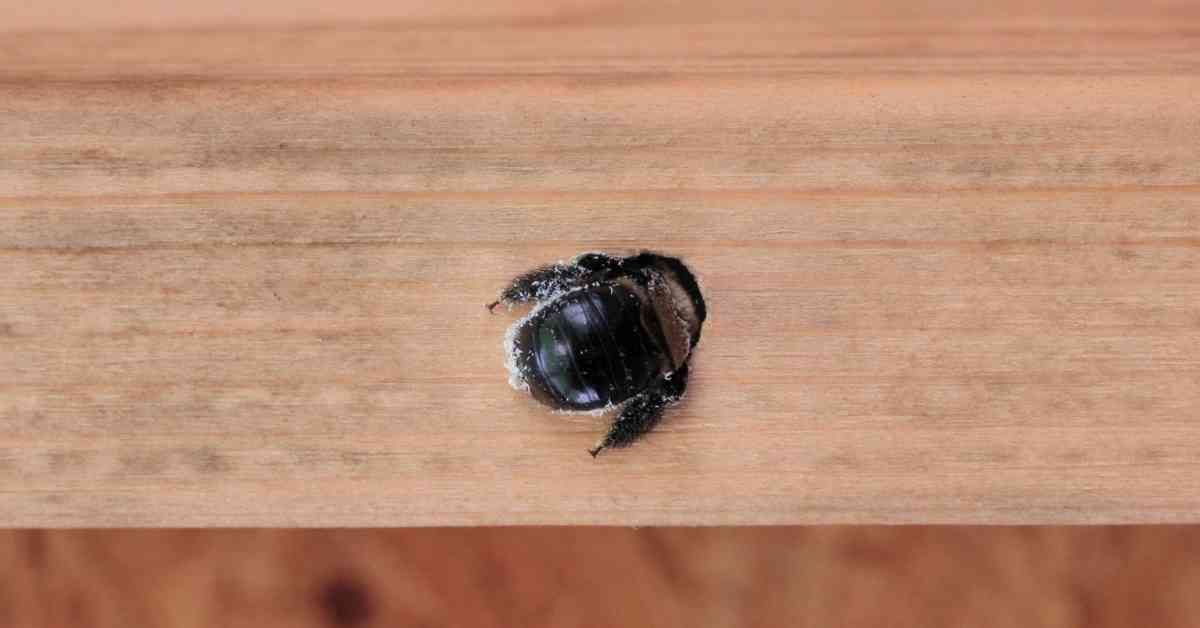Learn More About Active Wood Bee Infestations And How To Use Professional Carpenter Bee Spray
If you have been seeing large, black bees around your home, you may have a carpenter bee infestation. Carpenter bees are a unique and pesky type of bee that drill into wood to make their nests. They can cause noticeable damage to your property if they are not removed quickly. In this blog post, we will explain what they look like, how to spot signs of infestations, and how to get rid of carpenter bees in 3 easy steps!
Identifying Carpenter Bees
Carpenter bees are large, primarily black bees that can be easily identified by their shiny abdomen. They have a fuzzy yellow band on their thorax and are often mistaken for bumblebees. These insects are commonly referred to as wood bees, as they bore into wood to make their homes and raise their young. Measuring in at about 1/2 to 1 inch, these bees are relatively large and noticeable. Their abdomens are particularly pronounced, with metallic-looking reflective textures that can appear purple, dark blue, green, or even yellow.
Unlike bumblebees, carpenter bees do not sting humans unless they are provoked. Male carpenter bees are physically incapable of stinging. The female carpenter bee has the ability to sting but is highly unlikely to do so unless thoroughly provoked. Carpenter bees usually like to make their home in unfinished and unpainted wood. However, they may occasionally bore into painted or finished wood. Fortunately, these bees are typically not considered true structural pests, as they don't progressively infest very large portions of a given structure.

Tell-tale Signs Of A Carpenter Bee Infestation
If you suspect your home or business may have a carpenter bee infestation, there are several things you can search for to confirm your suspicions. One sign of an infestation is the presence of large, black bees around your home. You may also see circular holes in wooden surfaces where the bees have been drilling into the wood. If left untreated, carpenter bees can cause significant damage to your property.
3 Easy Steps To Get Rid Of Carpenter Bees
Step 1. Spray Residual Insecticide
The first step you'll immediately want to take is spraying the active infestation. Specifically, you'll want to spray the areas where carpenter bees have been boring into the wood. You'll want to use Avesta CS, Demon WP, and FenvaStarCap.
Carpenter bee holes are typically the size of a dime or slightly smaller. These bees like to locate their dwellings on hard-to-see undersides of wood surfaces in most circumstances. These include places like overhangs, soffits, siding, fence posts, and more. As long as the area is protected from rain, you can treat the area twice with an interval of roughly three to four weeks. This will last a good two to three months, which spans the majority of the carpenter bee nesting season.
For More Severe Carpenter Bee Infestations
If you've got a reasonably severe situation where the carpenter bees have infested log or cedar structures, we recommend treating the area more than just twice. A two-week interval for spray treatments is optimal, followed by dust insecticide treatments.

Step 2. Use Insecticide Dust In Carpenter Bee Holes
Suppose you're looking at a situation beyond prevention or minor issues and currently have an active infestation. In that case, you'll need to rely on using a powerful dust insecticide, such as Tempo Dust. You'll want to spray every single carpenter bee hole you find. We recommend halfway filling your JT Eaton Hand Bellow Duster or a duster of your choice with the dust we mentioned above. Ensure you dust any and all openings.
The tricky thing about carpenter bee holes is that while they only appear an inch or so deep, they are generally much deeper after a 90-degree turn the bees have bored. These additional channels can range anywhere from 6 inches to as long as 4 feet! Inside this extra length of the tunnel, the female carpenter bee will lay eggs in especially bored egg chambers. This is why it's all the more important to ensure these infestations are taken care of thoroughly.
Step 3. Ensure You Plug Up All Carpenter Bee Holes
After treating the active infestation, it's essential to take preventative measures. Carpenter bees will often re-infest from areas if proper precautions are not taken. You can do this by caulking up all entrances and exits that the carpenter bee may use to get back in. Typically, fall is the safest season to plug these holes. In addition to caulking compound, you may also use cork, plugs, or even putty.
One thing you'll really want to be careful about is plugging these carpenter bee holes too early. It may seem like a great idea to plug up these holes as quickly as possible, but by doing so, you're not giving the bees a chance to pass through the vital insecticide dust. This leaves you open to the bees searching for and infesting other locations. If you've seen a pattern of bees chewing and boring around your home, ensure you spray early the next year. While these infestations may be bothersome, you can rest assured you'll be able to handle them without too much trouble if you catch them early on.
Preventing Carpenter Bee Infestations
When it comes to handling a carpenter bee infestation, prevention is the name of the game. There are a few key actions you'll want to take in order to prevent these carpenter bees from coming back.
If your home or surrounding structures are constructed of wood, make sure the surfaces have been painted or sealed. This will really go a long way toward discouraging future infestations by preventing them from boring into the wood. You can also take full advantage of this opportunity to seal up any existing holes that previous infestations may have caused. Remember - doing this before spring is optimal. If you seal the holes after an infestation begins, the carpenter bees will simply find an exit by boring out new holes from within the wood.
DIY Pest Control Has Everything You Need To Rid Your Home Of Carpenter Bees
Residual insecticides and dust work wonders for warding off curious new pests, so be sure to stock up on insecticides designed to get rid of carpenter bees in 3 easy steps. Check out our selection here!









